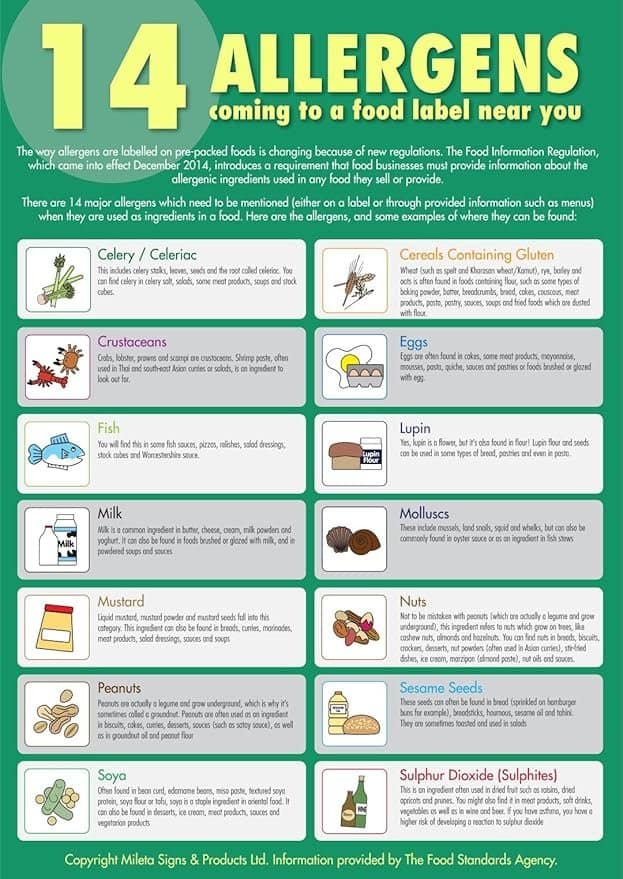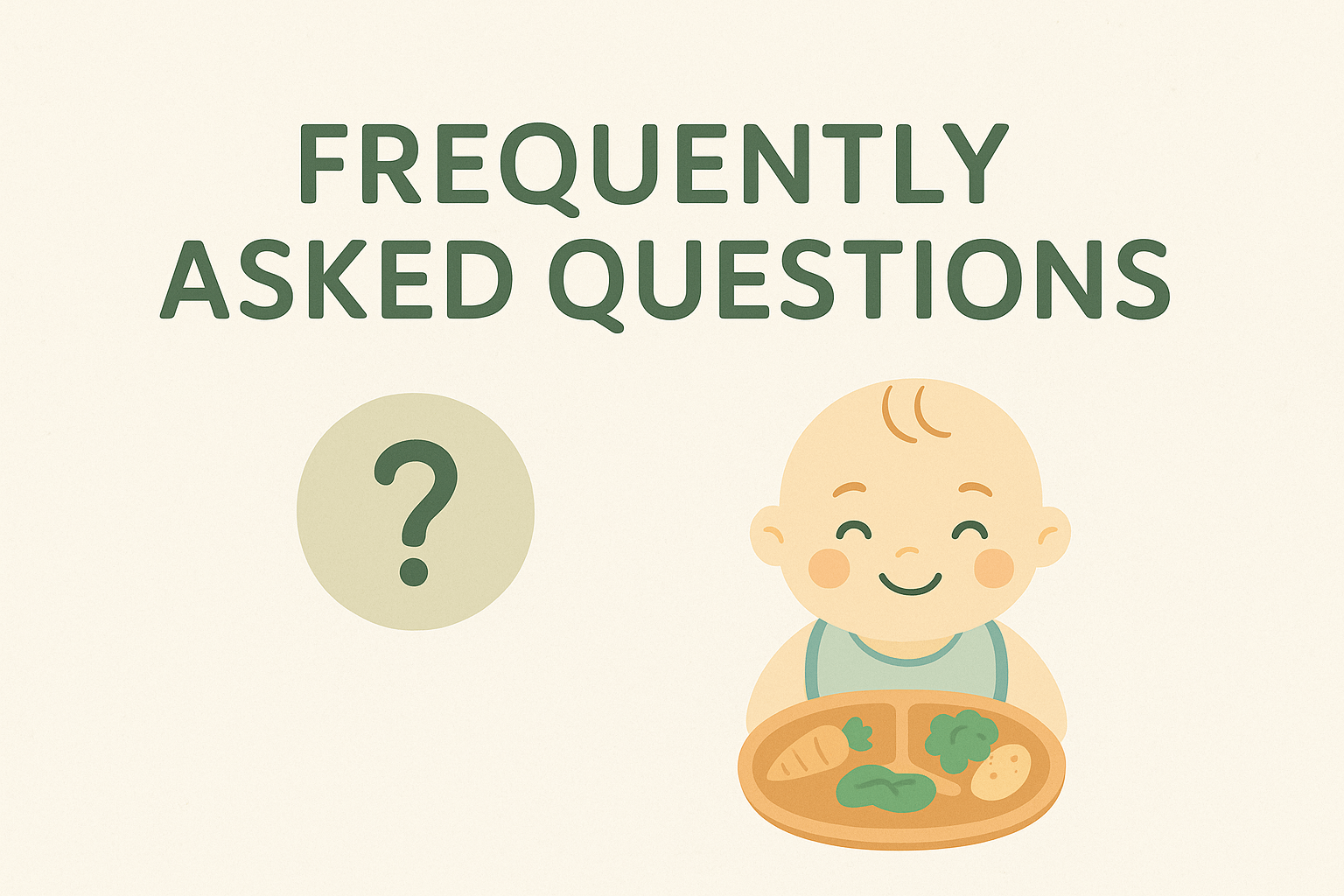Introduction – Understanding Common Food Allergens and Their Impact
Food allergies can cause serious health issues for many individuals. Among the most common allergens are peanuts, eggs, and dairy, which can provoke allergic reactions that range from mild to life-threatening. This article will explore these prevalent allergens, their symptoms, management, and the latest insights on prevention.
The Basics of Food Allergies
Food allergies represent an abnormal immune response to certain proteins found in food. They arise when the immune system mistakenly identifies a typically harmless substance as a threat, resulting in a range of physiological reactions that can vary from mild to life-threatening. This misidentification triggers the immune system to produce specific antibodies known as Immunoglobulin E (IgE), which in turn release chemicals like histamine that cause allergic symptoms.
The spectrum of food allergies is relatively broad, but four allergens are particularly prevalent in the population: peanuts, eggs, dairy, and shellfish. These foods account for the majority of allergic reactions. Whereas some children may outgrow allergies to eggs or milk, reactions to peanuts and shellfish often persist into adulthood. The mechanisms behind these food allergies can vary, yet they typically involve both genetic and environmental factors.
Understanding the prevalence of food allergies can help elucidate their impact on different populations. It has been estimated that around 3-6% of children in the United States have food allergies, with rates rising in recent years. Some studies suggest that up to 10% of adults may also be afflicted. In certain regions and demographics, specific allergies are more common. For example, peanut allergies are particularly prevalent in Western countries, while allergies to rice may be more common in Asia. Additionally, statistics show that food allergies are also on the rise globally, a trend that has researchers and health professionals concerned.
The symptoms associated with food allergies can range from mild to severe, and they can manifest in various parts of the body. Mild symptoms may include hives, rashes, and gastrointestinal issues such as nausea or diarrhoea. More severe reactions can lead to anaphylaxis, a life-threatening condition characterised by difficulty breathing, swelling of the throat, rapid heart rate, and a significant drop in blood pressure. Anaphylaxis can occur within minutes of exposure to the allergen and requires immediate medical attention. The unpredictability of these reactions is particularly troubling for those living with food allergies, as even small amounts of trigger foods can elicit severe responses.
It is crucial to distinguish food allergies from food intolerances, as the two are often confused. While food allergies involve an immune system response and can result in serious consequences, food intolerances typically result in discomfort without triggering the immune system. For instance, lactose intolerance, which involves difficulty digesting lactose due to a deficiency of the enzyme lactase, can cause symptoms such as bloating and diarrhoea but does not provoke an allergic response in the typical sense.
The immune response associated with food allergies is complex and remains an area of active research. Factors such as genetics, the age of the individual, and the nature of the food itself all play a role in the likelihood of developing a food allergy. For instance, infants who are exposed to certain allergenic foods like peanuts and eggs at an early age may have a reduced risk of developing allergies to these foods. This discovery has led to revised guidelines suggesting that early introduction of allergenic foods may be beneficial in preventing allergies.
Despite these guidelines, there remains a significant level of confusion and misinformation among parents and caregivers about when and how to introduce allergenic foods. It is critical to approach these decisions with guidance from healthcare professionals who can provide tailored advice based on individual circumstances.
Overall, food allergies represent a significant health concern, particularly amongst children. With an increasing prevalence worldwide and a range of potential symptoms, awareness and understanding of these allergies are vital. Understanding the differences between food allergies and intolerances, along with recognising the role of the immune system, informs both individuals and healthcare providers in managing these conditions more effectively. Those who suffer from food allergies must take assertive steps to manage their health, always being prepared to avoid exposure and to respond promptly in the event of an allergic reaction. As research continues, we may uncover more about the underlying causes of food allergies, paving the way for innovative prevention and treatment strategies.
Peanut Allergy: A Severe Concern
Peanut allergy is one of the most common and severe food allergies, particularly affecting children and young adults. The immune system mistakenly identifies proteins found in peanuts as harmful, leading to an exaggerated response. This can result in a range of symptoms, from mild skin reactions to life-threatening anaphylaxis. The prevalence of peanut allergies has been on the rise in recent years, with studies indicating that approximately 2.5% of children in the United States are affected, and up to 20% of these individuals may experience severe allergic reactions.
Symptoms of peanut allergies can manifest within minutes of exposure and may include hives, itching, swelling, abdominal cramps, gastrointestinal distress, coughing, wheezing, and even difficulty breathing. In severe cases, a life-threatening reaction known as anaphylaxis can occur, characterised by a rapid drop in blood pressure, loss of consciousness, and potential death if not treated immediately. These severe allergic reactions underscore the critical importance of awareness, prompt recognition, and management of symptoms.
Several risk factors contribute to the likelihood of developing a peanut allergy. Individuals with a family history of allergies, such as asthma, eczema, or other food allergies, are at a higher risk. Additionally, evidence suggests that age can play a role, as most peanut allergies are diagnosed in early childhood. Interestingly, children who already have a history of allergic reactions to other foods or environmental allergens are also more susceptible to developing a peanut allergy.
Given the severe nature of peanut allergies, prevention strategies have become a focal point for parents and healthcare providers. Current guidelines recommend that parents introduce peanuts into their child’s diet between the ages of 4 to 6 months, particularly for those deemed at high risk for allergies, such as those with eczema or egg allergies. Early introduction is thought to help the immune system develop tolerance to peanut proteins, reducing the risk of subsequent allergies. In this context, peanut-containing foods can be gently incorporated into a child’s diet in various forms, such as peanut butter diluted with water or mixed into pureed fruits.
Despite best efforts, some children will still develop a peanut allergy, making it vital for parents and caregivers to be equipped with knowledge about managing potential allergic reactions. One of the most crucial components of this management is the availability of epinephrine auto-injectors. These devices deliver a life-saving dose of epinephrine during anaphylactic reactions, swiftly counteracting symptoms and stabilising the individual until further medical assistance can be obtained. It is essential for anyone diagnosed with a peanut allergy to have an epinephrine auto-injector on hand, along with a written action plan detailing steps to take during an allergic reaction.
Education around the signs of anaphylaxis and proper use of an epinephrine autoinjector can empower individuals living with peanut allergies and their families. Training sessions emphasising recognition of symptoms and practical exercises on how to administer epinephrine can be lifesaving. The accompanying psychological burden of managing these allergies should not be overlooked, as anxiety around accidental exposure can impact daily life and social situations.
In addition to immediate reaction management, long-term strategies are essential to navigate the complexities associated with a peanut allergy. Cross-contamination is a significant concern, particularly when dining out, as meals may inadvertently contain peanut products. It is vital for individuals with peanut allergies to communicate effectively with restaurant staff about their dietary restrictions and to advocate for safe food practices.
The rising prevalence of peanut allergies has prompted research into desensitisation therapies, such as oral immunotherapy, which aims to increase tolerance to peanuts over time. Though these therapies show promise, they are not universally effective and may not be suitable for everyone. The existing approach centres on careful dietary management, acute reaction preparedness, and fostering a supportive environment for affected individuals.
Awareness and education surrounding peanut allergies continue to evolve as researchers strive to understand the underlying mechanisms and effective prevention strategies. Collaboratively, public health initiatives, healthcare providers, and communities play a crucial role in supporting those with peanut allergies, paving the way for more inclusive environments that prioritise safety and accessibility for individuals living with food allergies. Through comprehensive education, proactive management strategies, and ongoing research, it is possible to mitigate the risks associated with peanut allergies and improve the quality of life for those affected.
Common Food Allergens

Disclosure: As an Amazon Associate, I earn from qualifying purchases. This means that if you click on a link and make a purchase, I may receive a small commission at no additional cost to you.
Egg Allergy: Understanding Its Nature
Egg allergies are among the most common food allergies, particularly in children. This specific allergy typically arises from the immune system’s misguided response to proteins found in eggs, leading to a range of allergic reactions that can differ significantly in severity. The two main types of egg proteins that commonly trigger allergic reactions are ovalbumin and ovomucoid, which are primarily found in egg whites, while egg yolks contain other proteins that may also provoke an allergic response. Understanding the intricacies of egg allergies can help caregivers and individuals affected navigate the challenges that come with this condition.
Symptoms of egg allergies can manifest shortly after consumption, ranging from mild to severe. Common symptoms include skin reactions such as hives, eczema, or itching, gastrointestinal distress including abdominal pain, nausea, or vomiting, and respiratory issues such as nasal congestion or difficulty breathing. In some cases, exposure to egg proteins can lead to anaphylaxis, a life-threatening reaction that demands immediate medical attention. Recognising these symptoms early is crucial for effective management and ensuring safety for those affected by the allergy.
The prevalence of egg allergies is particularly notable in infants and young children. Research indicates that approximately 3% to 5% of children are affected by this allergy, making it one of the most frequently identified food allergies in pediatric populations. Although many children may outgrow their allergies as they develop, some individuals retain their egg allergy into adolescence and adulthood. Studies suggest that about 70% to 80% of children with egg allergies will eventually outgrow the condition, often by the age of 16. However, this variability highlights the necessity for ongoing monitoring and assessment by healthcare professionals.
Living with an egg allergy necessitates careful dietary and lifestyle adjustments. The most straightforward preventive measure is strict avoidance of eggs and egg-containing products. This includes not only whole eggs but also processed foods that might contain egg derivatives. For example, common products such as mayonnaise, some salad dressings, baked goods, and certain pastas may include eggs as key ingredients. Therefore, it becomes essential for individuals with egg allergies and their families to develop a habit of reading food labels meticulously. Understanding food labelling regulations and becoming familiar with alternative names for eggs can be invaluable in preventing unintentional consumption.
For those diagnosed with an egg allergy, dietary modifications can be daunting, especially for children who may long for classic dishes such as omelettes, pancakes, or cakes that typically include eggs. However, there are numerous egg substitutes available that can help individuals maintain a balanced and enjoyable diet. Common alternatives include mashed bananas, applesauce, silken tofu, or commercially available egg replacement products made from ingredients like chickpea flour or ground flaxseed mixed with water. These substitutes can serve as functional replacements in baking and cooking, allowing for creativity without compromising safety.
Social situations also pose challenges for individuals with egg allergies, particularly during gatherings or events where food is shared. Awareness and education about the severity of food allergies among friends, family, and caretakers can foster a supportive atmosphere where precautions are understood and respected. For parents, open communication with schools and caregivers is pivotal in ensuring that children with egg allergies are adequately protected during meals or snacks. Establishing an emergency action plan, including the use of epinephrine auto-injectors for severe reactions, is crucial for safeguarding those at risk.
Furthermore, while navigating the complexities of an egg allergy can be overwhelming, it’s equally important to keep an open dialogue with healthcare providers. Regular follow-ups and allergy testing can provide valuable insights into the evolving nature of the allergy, as some individuals may show signs of tolerance over time. For many families, incorporating allergists or nutritionists into the conversation can help in crafting personalised dietary plans that ensure nutritional needs are met while avoiding allergens.
Ultimately, egg allergies are a significant concern, particularly in the pediatric population, warranting attention due to their varying symptoms and potential for serious reactions. With the right preventive measures, educational support, and dietary adaptations, individuals affected by this allergy can lead safe and fulfilling lives. The understanding of egg allergies, including lifestyle adjustments and potential for outgrowing the allergy, reinforces the importance of awareness and preparation in managing food allergies, paving the way for a more inclusive and safe environment for everyone.
Dairy Allergy: Myths and Realities
Dairy allergies are among the most common food allergies, particularly affecting children. However, understanding this condition is often clouded by myths and misconceptions. Contrary to popular belief, a dairy allergy is not the same as lactose intolerance. While lactose intolerance involves difficulty digesting lactose sugar found in milk, dairy allergies are immune responses to proteins in milk, primarily casein and whey. It’s crucial to differentiate these two conditions, as their management strategies and symptoms differ significantly.
Individuals with a true dairy allergy can experience a range of symptoms when they consume dairy products. These symptoms may include skin reactions such as hives or eczema, gastrointestinal disturbances like nausea, vomiting, or diarrhoea, and respiratory issues including wheezing or nasal congestion. In severe cases, dairy allergies can lead to anaphylaxis, a potentially life-threatening reaction characterised by difficulty breathing, swelling of the throat or tongue, and a rapid drop in blood pressure. Recognising these symptoms is vital for timely intervention and management.
One common misconception is that children with a dairy allergy will inevitably outgrow it. While some do, it’s essential to note that dairy allergies can persist into adulthood, especially in individuals with a history of more severe allergic reactions. Research indicates that approximately 70% of children outgrow their dairy allergy by the age of 16; however, those who experience significant anaphylactic reactions are less likely to outgrow the allergy. This unpredictability emphasises the importance of ongoing monitoring and management strategies throughout life.
Managing a dairy allergy requires a multifaceted approach, starting with strict avoidance of all dairy products. Individuals with this allergy must become adept at reading labels, as milk and its derivatives can be found in a surprising range of food products, from baked goods to processed meats. The U.S. Food and Drug Administration mandates that milk be clearly labelled on products, but the presence of other dairy components, such as casein, may not be as obvious.
For those navigating a dairy allergy, alternative options are available that can help meet nutritional needs without compromising safety. There is an extensive array of non-dairy substitutes, including plant-based milks made from almonds, soy, rice, or oats. These alternatives often come fortified with calcium and Vitamin D to help maintain bone health. Moreover, there are various non-dairy yoghurts, cheeses, and ice creams that replicate the texture and taste of traditional dairy products, enabling individuals to enjoy favourite recipes without the risk of an allergic reaction.
When transitioning to a dairy-free diet, one must ensure adequate nutritional intake. Dairy products are a significant source of calcium, phosphorus, Vitamin B12, and riboflavin. Therefore, it’s essential to source these nutrients from alternative food sources. Dark leafy greens, fortified plant-based milks, nuts, seeds, and certain fish provide excellent substitutes for the nutritional benefits offered by dairy.
Another common myth surrounding dairy allergies is that they are solely genetic. While a family history of allergies can increase the likelihood of developing a dairy allergy, environmental factors play a significant role as well. Increased exposure to potential allergens during early life stages, changes in diet patterns, or even the timing of introducing solid foods can influence the development of a dairy allergy.
Support and education are crucial in managing this condition. Individuals with dairy allergies should consider working with a registered dietitian or healthcare provider who can help navigate the complexities of food allergies, ensuring a balanced and nutritious diet while avoiding allergens. Furthermore, joining support groups can provide invaluable resources and emotional support for those affected and their families.
Understanding and managing a dairy allergy requires ongoing education not only for the individuals affected but also for their families and caregivers. Myths surrounding dairy allergies often contribute to misunderstanding and stigmatisation, which can impact an individual’s emotional well-being. By dispelling these myths and providing accurate information about symptoms, management strategies, and dietary substitutions, we can create a more accommodating environment for those with dairy allergies, helping them lead healthy, fulfilling lives free from unnecessary worry and exclusion. Recognising the seriousness of dairy allergies while acknowledging the advancements in our understanding and management of these conditions is essential as we continue to navigate the landscape of food allergies.
Conclusion
In conclusion, understanding food allergens such as peanuts, eggs, and dairy is crucial for prevention and management. Awareness of symptoms and appropriate response strategies can significantly improve the quality of life for those affected. Ongoing research and public education are essential to mitigate the risks associated with these allergens.

Frequently Asked Questions About Food Allergies
What is a food allergy and how common is it?
A food allergy occurs when your immune system overreacts to certain types of food proteins, producing specific antibodies called Immunoglobulin E (IgE) that trigger allergic symptoms. Food allergy affects around 10% of infants, 4-8% of children, and about 2% of adults in Australia and New Zealand. In the UK, approximately 6% of the adult population (around 2.4 million people) have a clinically confirmed food allergy.
What are the most common food allergens?
The most common allergenic foods include cow’s milk, eggs, peanuts, tree nuts (such as walnuts, almonds, hazelnuts), shellfish, fish, wheat, and soybeans. In UK adults, peanuts and tree nuts like hazelnuts, walnuts and almonds are most likely to cause allergic reactions, along with fresh fruits such as apples, peaches and kiwis. There are 14 allergens that food businesses are legally required to declare: celery, cereals containing gluten, crustaceans, eggs, fish, lupin, milk, molluscs, mustard, peanuts, sesame, soybeans, sulphur dioxide and sulphites, and tree nuts.
What are the symptoms of food allergies?
Food allergy symptoms can range from mild to severe and typically occur within two hours of eating the trigger food. Common symptoms include feeling dizzy or lightheaded, itchy skin or raised rash (hives), gastrointestinal issues like vomiting and diarrhoea, and breathing problems. In rare cases, food allergies can cause anaphylaxis, an extreme allergic reaction that is life-threatening and requires immediate medical attention.
Can children outgrow food allergies?
Yes, many children can outgrow certain food allergies, though this varies by allergen. Mild or moderate food allergic reactions are common, but the likelihood of outgrowing allergies depends on the specific food and severity of reactions. Some allergies like those to milk and eggs are more commonly outgrown, while others like peanut and tree nut allergies often persist into adulthood. Around half of all adult food allergies actually develop later in life rather than persisting from childhood.
Does cooking food remove allergens?
Cooking does not completely remove allergens, but it can reduce their potency in some cases. Cooked or baked foods containing cow’s milk and/or egg in items like muffins, cakes, or biscuits may be tolerated by some people with allergies to these foods. However, unless tolerance to cooked or baked foods is confirmed through proper medical assessment, this should be discussed with a clinical immunology/allergy specialist before introducing these foods.
How are food allergies diagnosed and tested?
If a GP thinks you have a food allergy, you may be referred to a specialist for tests. These tests can include a skin-prick test (where a drop of liquid containing the suspected food allergen is placed on your skin), blood tests to measure specific IgE antibodies, and elimination diets where you avoid the suspected food to see if symptoms improve. You may also be asked to keep a food and symptoms diary to help identify triggers. It’s important to note that a positive test means sensitisation has occurred, but this doesn’t always mean you’ll have symptoms when eating the food.
Can you have allergic reactions without eating the food?
Allergic reactions to inhaled food particles are uncommon, as most food proteins do not easily disperse as aerosols. However, some situations can cause reactions without direct consumption, including steam from cooking (which can carry food particles), dried egg powder, and fine dust from foods like soybeans in processing plants or wheat dust in bakeries. Most apparent “airborne” reactions in young children are actually due to behaviours like messy eating and mouthing objects rather than true inhalation. Hand sanitiser alone cannot remove food allergens – soap and water are needed for effective removal.
The Food Allergy Fix: An Integrative and Evidence-Based Approach to Food Allergen Desensitization


Disclosure: As an Amazon Associate, I earn from qualifying purchases. This means that if you click on a link and make a purchase, I may receive a small commission at no additional cost to you.
Further Reading
- Avoiding Choking Hazards During Feeding
- Exploring Baby-Led Weaning and Traditional Spoon-Feeding
- Common Baby Illnesses and When to Call a Doctor
- Baby Food Allergies: Symptoms and Prevention
Understanding Common Food Allergens and Their Impact Podcast
Key Research Sources
The most comprehensive and recent data comes from:
BSACI (British Society for Allergy & Clinical Immunology – provides current UK prevalence data
Imperial College London Analysis – Tracked food allergy trends in the UK from 2008-2018
JAMA Network Study – Large-scale US adult food allergy prevalence study of over 40,000 adults
EuroPrevall Birth Cohort Study – Multi-national European study including UK data
Murdoch Children’s Research Institute – Australian data on outgrowing food allergies

